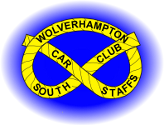This was already the fifth year of Audi Sports sponsorship and for a second time there was a complete change in the start and finish venues of the event. Documentation was based in Telford at the Moat House Hotel and to reduce the rally's road mileage the start control was at The Cann Office Hotel at Llangadfan. From there the run out to the first stage was only two miles. Sixty nine miles of stages followed with two service areas, the second in the usual car park in Machynlleth, but the first at a new site on a forest road in Dinas Mawddwy. The finish was back in Telford following two runs at a 1.3 mile super special stage laid out in the Town Park adjacent to the shopping centre.
There were no more Group B cars in world rallying, the FIA had banned them at the beginning of the year, but the MSA had permitted the 6R4 to continue in British national events under strict controls. There were a host of them on the event. Up against these erstwhile Group B cars were a selection of the new World Championship Group A challengers. Mark Lovell and journalist Jerry Williams were in a Ford Team Sierra Cosworth. Timo Salonen brought along a Mazda Team Europe 323 Turbo 4WD. The team principal was Archim Warmbold who was there to watch progress as was his eight year old son Anthony.
The main excitement of the event was the outcome of the battle for the Marlboro National Rally Championship title. David Gillanders in a 6R4, Russell Brookes in a Kadett (Astra) Gsi and Trevor Smith in a Group A Sierra Cosworth, all had a good chance of being champion. It was Gillanders, however, who won the rally and the championship.
The names all the way down the entry list are fascinating to look back on now. Just a couple of results at random are, Harry Hockley and Nicky Grist beating 19 year old Colin McRae and Derek Ringer in a similar car by 3 minutes. Andrew Burton winning the Private Entrant category in his AlfaFerrari and Paul Dyas rolling and retiring on top of a marshal's car.
The organisers also took a step up in the quantity and quality of paperwork provided to officials and competitors. All the documentation required for the administration of the event were now found in the “Officials Handbook” and service crews had their own “Service Roadbook”. Maps and diagrams of the basic outlines of the stages and road sections were included in the roadbook to assist competitors. The information regarding service arrangements was available to competitors by post prior to the event at extra cost. This was all aimed at reducing the crew's workload on the evening before the event.
October 24th 1987

